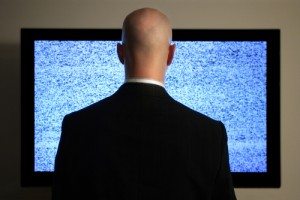 For every action, there is an equal and opposite reaction. So said Isaac Newton in his third law of motion. And so it seems to me when it comes to opinions on the present or future state of television. What else can you think when, within the short span of a week, you run across these two headlines?
For every action, there is an equal and opposite reaction. So said Isaac Newton in his third law of motion. And so it seems to me when it comes to opinions on the present or future state of television. What else can you think when, within the short span of a week, you run across these two headlines?
You Won’t Believe How Big TV Still Is and TV Is Dead. Now What?
Now what, indeed?
The truth is, they’re both partly right. Yes, the mass TV audience has been shrinking, siphoned off first by cable and then the Internet. But television viewership still dwarfs the audience for online video, and the economic battle isn’t even close according to a new Nielsen study as reported by AdWeek.
…while TV’s audience is still almost twice that of digital video, the amount of money in digital isn’t even 5 percent of the mammoth $74 billion chunk of change in television.
TV revenues typically surge in an election year and I wouldn’t expect 2014 to be any different. But the threat of fragmentation is real and growing. This is no time for the television industry to be complacent. But panic isn’t called for either.
What could the future of television look like and how will it get there? Here’s one road map worth considering, laid out in just 12 words by Ken Goldstein of the consulting group CMI.

Challenging, obviously. But a long way from a death knell.
TV screen image via Shutterstock
12 point plan image via Ava Seave’s summary on Forbes.com









2 Comments
I think the future of TV is less a tech issue than a business model issue. As long as cable and satellite operators insist on bundling packages we don’t want rather than allowing for an iTunes-like cherry picking model they will lose share to online on demand media. They need to move away from making audiences pay for what they don’t want.
As an entertainment venue>? Probably not. As a News source?. Moribund.